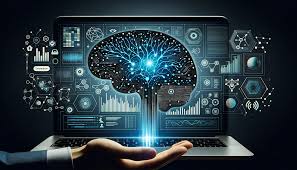Artificial Intelligence (AI) and Machine Learning (ML) have emerged as transformative technologies, revolutionizing industries from healthcare and finance to marketing and manufacturing. The development of AI/ML solutions follows a structured lifecycle that encompasses various stages, from problem identification and data collection to model deployment and continuous improvement. This comprehensive guide explores each phase of the AI/ML development lifecycle, highlighting key considerations, best practices, and the role of technology in delivering successful AI/ML applications.
Understanding the AI/ML Development Lifecycle
The AI/ML development lifecycle consists of several interconnected phases, each crucial for building robust and effective machine learning models. While specific methodologies and workflows may vary, the core stages typically include:
1. Problem Definition and Planning
The first step in the AI/ML development lifecycle involves defining the problem statement and setting clear objectives for the project. This phase requires collaboration between data scientists, domain experts, and stakeholders to understand business requirements, identify opportunities for AI/ML applications, and define success criteria.
- Key Activities:
- Conducting stakeholder interviews to gather requirements.
- Defining the scope, goals, and constraints of the AI/ML project.
- Formulating hypotheses and identifying metrics for model evaluation.
2. Data Collection and Preparation
Data is the foundation of any AI/ML solution. In this phase, data scientists collect, preprocess, and clean relevant datasets to ensure they are accurate, representative, and suitable for training machine learning models. Data preparation involves handling missing values, encoding categorical variables, and performing feature engineering to extract meaningful insights.
- Key Activities:
- Acquiring and sourcing data from various internal and external sources.
- Exploratory data analysis (EDA) to understand data distributions and relationships.
- Data preprocessing, including normalization, scaling, and feature extraction.
3. Model Development and Training
Once the data is prepared, data scientists select appropriate machine learning algorithms and techniques to build and train predictive models. This phase involves experimenting with different algorithms, tuning hyperparameters, and evaluating model performance using validation techniques such as cross-validation.
- Key Activities:
- Selecting machine learning algorithms (e.g., regression, classification, clustering).
- Training models on labeled datasets and evaluating performance metrics (e.g., accuracy, precision, recall).
- Iteratively refining models based on feedback and validation results.
4. Evaluation and Validation
Evaluation and validation are critical stages to assess the performance and generalization capabilities of AI/ML models. Data scientists validate models against unseen data to ensure they generalize well to new, unseen inputs. Rigorous testing and validation help identify overfitting, underfitting, and potential biases in the model.
- Key Activities:
- Splitting datasets into training, validation, and test sets.
- Conducting model evaluation using appropriate metrics and statistical tests.
- Performing sensitivity analysis and assessing model robustness.
5. Deployment and Integration
Deploying AI/ML models into production environments requires careful planning and collaboration between data scientists, software engineers, and IT operations teams. This phase involves integrating models into existing systems, ensuring scalability, reliability, and security of deployed solutions. Continuous monitoring and maintenance are essential to monitor model performance and address issues in real-time.
- Key Activities:
- Containerizing models using platforms like Docker for deployment.
- Integrating models with APIs and microservices architecture.
- Implementing monitoring tools for performance tracking and error handling.
6. Monitoring and Optimization
The AI/ML development lifecycle does not end with deployment. Continuous monitoring and optimization are crucial to maintain model performance, adapt to changing data distributions, and improve accuracy over time. Data scientists use monitoring tools and techniques to track model drift, retrain models periodically, and implement updates based on new data and user feedback.
- Key Activities:
- Setting up monitoring dashboards to track key performance indicators (KPIs).
- Implementing retraining pipelines to update models with fresh data.
- Optimizing models for efficiency, scalability, and cost-effectiveness.
Best Practices and Considerations
- Cross-functional Collaboration: Foster collaboration between data scientists, domain experts, and stakeholders throughout the AI/ML lifecycle.
- Ethical Considerations: Address ethical and regulatory implications of AI/ML applications, including data privacy, bias mitigation, and transparency.
- Version Control: Implement version control for datasets, code, and model artifacts to ensure reproducibility and traceability.
- Continuous Learning: Encourage a culture of continuous learning and experimentation to adapt to technological advancements and industry trends.
Read More: How To Build a Successful SaaS Startup In 2024
Conclusion
Navigating the AI/ML development lifecycle requires careful planning, collaboration, and adherence to best practices at each stage. By following a structured approach from problem definition and data collection to model deployment and optimization, businesses can leverage AI/ML technologies to drive innovation, improve decision-making, and achieve competitive advantage in today’s data-driven world. As AI/ML continues to evolve, mastering the development lifecycle will be essential for unlocking the full potential of these transformative technologies.

